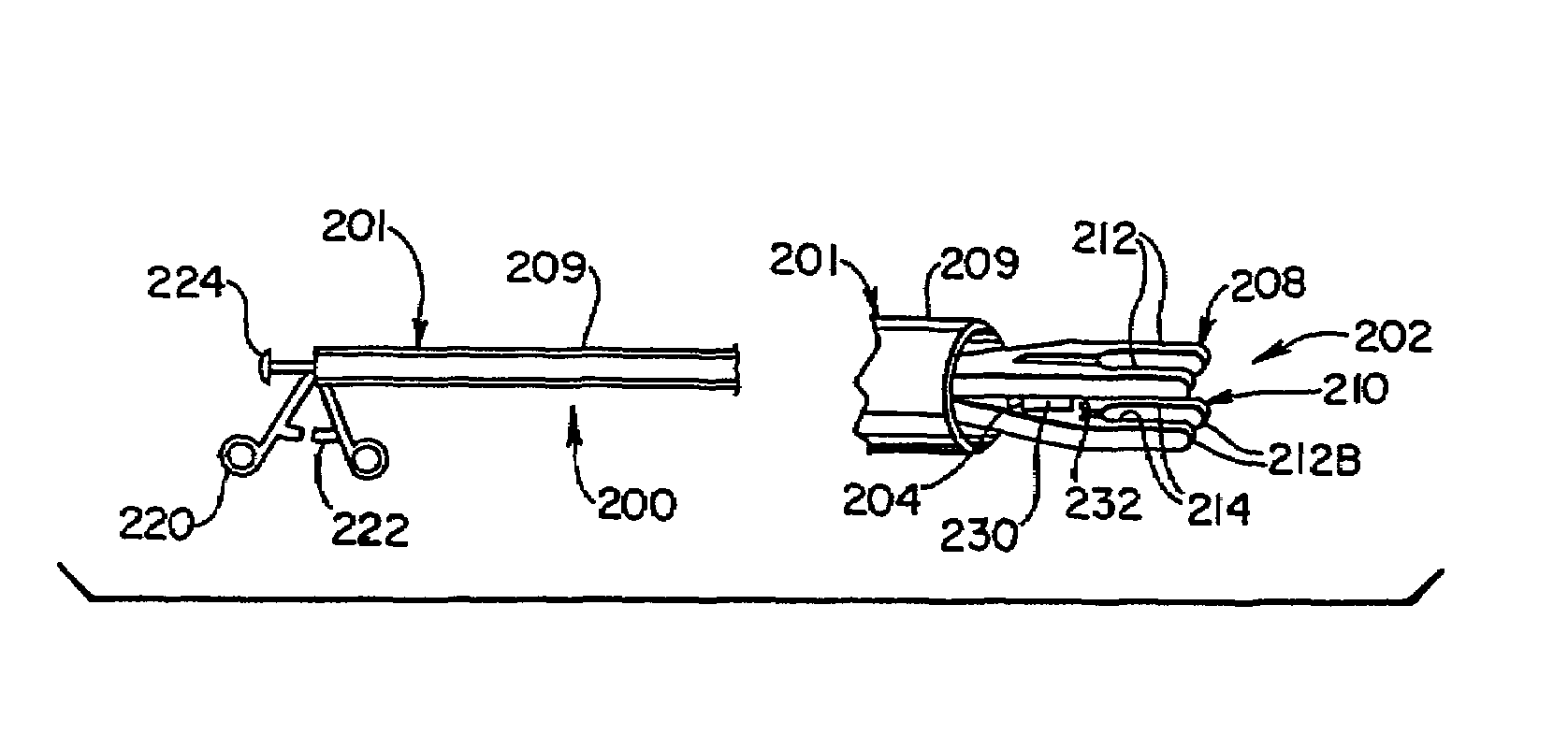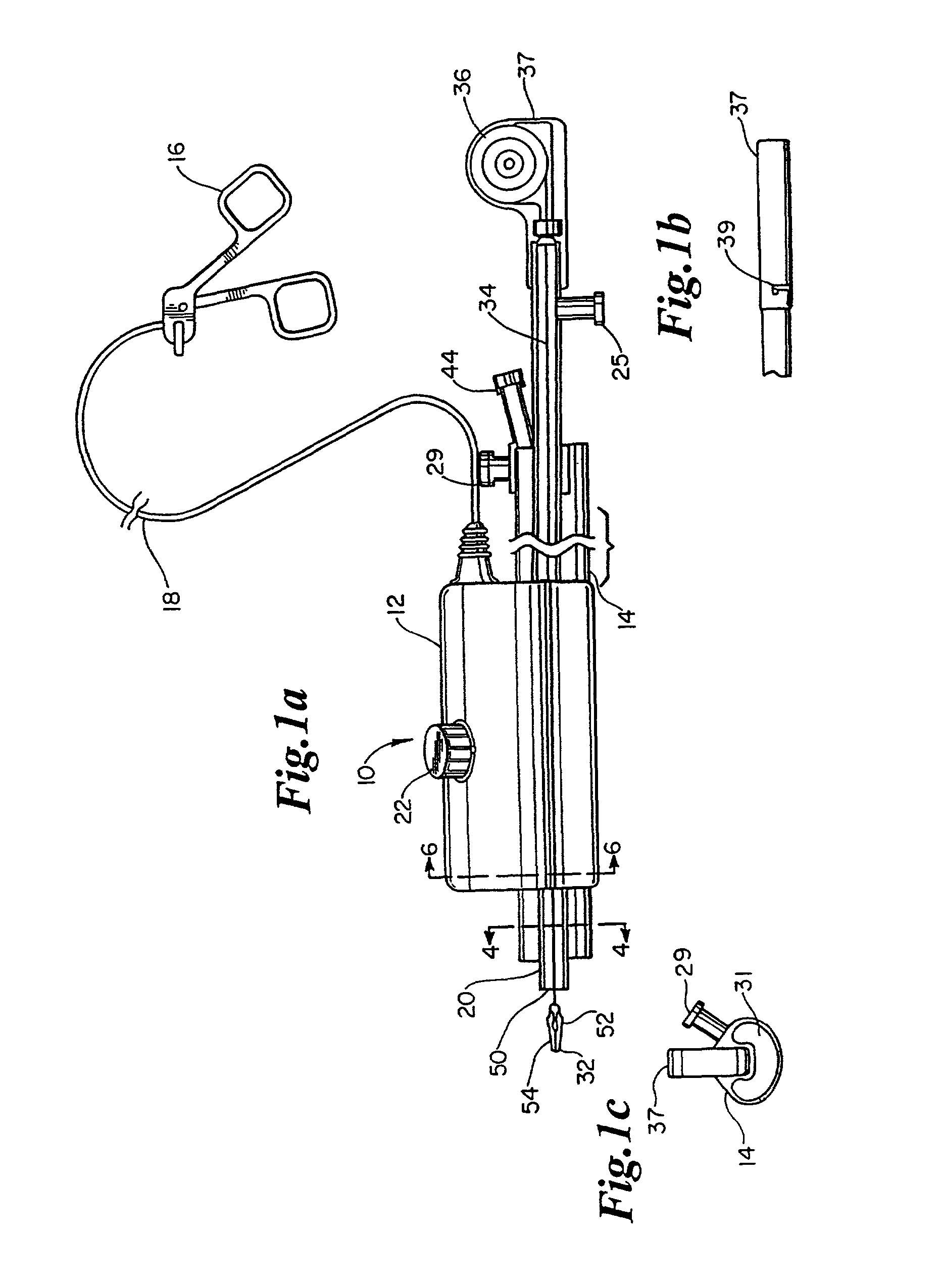Apparatus and method for vein removal
a vein and appendix technology, applied in the field of appendix and vein removal, can solve the problems of cosmetically undesirable scars, insufficient healing, and risk of infection for patients, and achieve the effect of maintaining tension
- Summary
- Abstract
- Description
- Claims
- Application Information
AI Technical Summary
Benefits of technology
Problems solved by technology
Method used
Image
Examples
Embodiment Construction
The Vein Harvesting Device
[0036]The structure of the vein harvesting device of the present invention can be understood generally with reference to FIGS. 1–8. The tools which are used in connection with the device during the vein harvesting procedure are shown in FIGS. 9–11 while FIGS. 12-16 illustrate the device and it's associated tools being used in a vein harvesting procedure.
[0037]The present invention is a device and method for harvesting a section of cylindrical and / or tubular tissue structure such as a vessel from a patient's body. The invention also has application for removing such tissue from animal bodies. The section may be used in another part of a patient's body or for transplanting into a second patient's body. For example, a section of the saphenous vein may be removed for use in coronary bypass surgery. The blood vessel needs to be removed without undue damage to the blood vessel, as well as with minimal damage and trauma to the patient. Although the description her...
PUM
 Login to View More
Login to View More Abstract
Description
Claims
Application Information
 Login to View More
Login to View More - R&D
- Intellectual Property
- Life Sciences
- Materials
- Tech Scout
- Unparalleled Data Quality
- Higher Quality Content
- 60% Fewer Hallucinations
Browse by: Latest US Patents, China's latest patents, Technical Efficacy Thesaurus, Application Domain, Technology Topic, Popular Technical Reports.
© 2025 PatSnap. All rights reserved.Legal|Privacy policy|Modern Slavery Act Transparency Statement|Sitemap|About US| Contact US: help@patsnap.com



